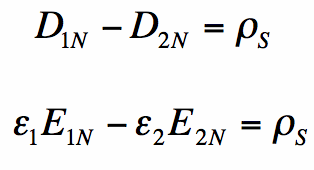I am asking this question because, even though I have the solutions manual from the exercises of the book "Microwave Engineering 4th edition", by David M. Pozar (one of the Bible books for microwave circuits and systems), I just don't understand the solution.
The exercise 1.11 from this book states the following:
"Assume an infinite sheet of electric surface current density \$ \vec{Js}=Jo·exp(j\beta z)·\vec{x} \$ is placed on the z=0 plane between free-space for z>0 and a dielectric with \$\epsilon = \epsilon_0·\epsilon_r\$. Find the resulting E and H fields in the two regions"
I was thinking of solving it by using the boundary conditions between two dielectric media. In fact, the previous exercise (1.10) is similar, but without the exponential term in the expression of the current sheet:
\$\nabla\$ x \$(\vec{E_2} - \vec{E_1}) = 0 \$
\$\nabla\$ x \$(\vec{H_2} - \vec{H_1}) = \vec{J_s} \$
But the solutions manual starts the exercise by assuming that this current sheet will generate obliquely propagating plane waves, without any further information, thus employing expressions for E and H fields which have components in the z direction. I can't understand the reasons why it makes this assumption. I hope you can help me.



